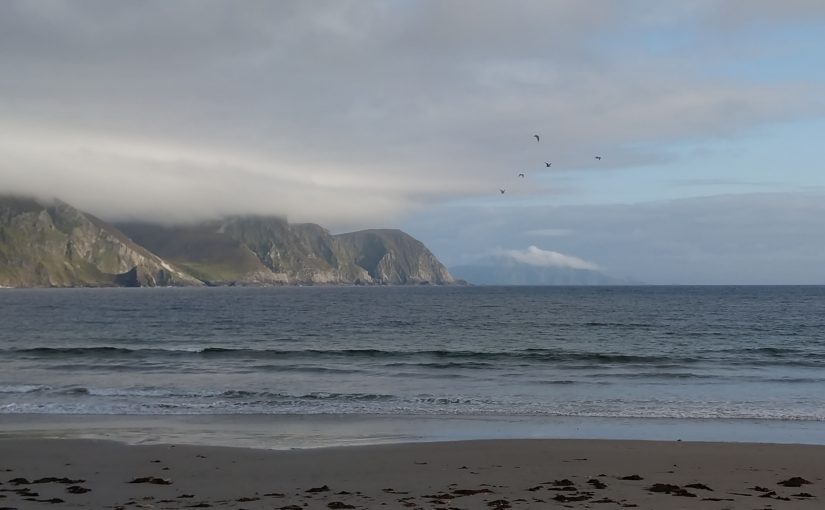The Blackbird and the Thrush is a very beautiful old tune. We have what may be a live transcription of a traditional harp performance, noted down by Edward Bunting in the 1790s. However, as usual with Bunting’s work, all is not straightforward, and he has messed us around a lot.
Continue reading An londubh agus an chéirseachCategory: Old Irish Harp Transcriptions Project
Doctor Hart
Edward Bunting made a two-page live transcription notation of a traditional Irish harp performance of the Carolan tune, Doctor Hart. I think this was done in 1792 from Hugh Higgins. You can see the manuscript pages online at Queens University Belfast Special Collections MS4.29 pages 90 and 91.
Continue reading Doctor HartPlanxty Irwin
On the same manuscript page as The Beggar, Bunting also wrote what looks like a live transcription notation of the tune of Planxty Irwin (DOSC 59). You can see both of these tunes on Queen’s University Belfast, Special Collections, MS4.29 page 7.
Continue reading Planxty IrwinColonel Irwin
In Queen’s University Belfast, Special Collections, MS4.29 page 20, there is a line of dots which I have always marked as “unidentified tune”. I just could not work out what is going on here.
However Sylvia Crawford has analysed the mode of the dots and suggests that they represent Bunting’s first attempt to transcribe a harp version of the tune of DOSC 60 Colonel Irwin.
Continue reading Colonel IrwinEdward Bunting as Collector
This is the video of the online talk I gave for Cruit Éireann last month, summarising some of my work on the Old Irish Harp Transcriptions Project. I hope you find it interesting and useful!
Continue reading Edward Bunting as CollectorBacach buí na leimne
Edward Bunting wrote a notation into one of his little transcription pamphlets in the 1790s, showing two tunes (Queen’s University Belfast, Special Collections, MS4.29 page 7). I think these may be live harp transcription notations.
Just glancing at the notations you can’t see them as two different tunes; there are three sections of notation with two sets of double-bar-lines dividing them up. But we can recognise them as two different tunes; the first two sections of notation are the tune of “The Beggar”, and the third section of notation is the tune of “Plangsty Irwin”.
Continue reading Bacach buí na leimneCasadh an tSúgáin
Edward Bunting made what looks to me like a live transcription notation of the tune of Casadh an tSúgáin, probably in Summer 1792. He writes 50 years later that he took this down from the harper Rose Mooney, but I don’t know if we can rely on his memory. Anyway, the transcription notation is very interesting and presents a very lovely version of the tune with a lot of what I assume is old Irish harp idiom and style in it.
Continue reading Casadh an tSúgáinMailí Bheag Ó
There are three different versions of the tune of Mailí Bheag Ó in Edward Bunting’s books and manuscripts. In this post I’m going to look at each of the three in turn, and then see if we can say anything useful about them and where he got each of them from. I think it is obvious that two of the versions come from two different harper informants on two different occasions, and one of them was lifted from older printed books.
Continue reading Mailí Bheag ÓPart 2 summary
Back in the Autumn, I posted a summary of part 1 of my Old Irish Harp Transcriptions project. By then, I had worked through the first section of Edward Bunting’s main transcription manuscript from the 1790s (now Queen’s University Belfast, Special Collections, MS4.29).
Now I have finished working through the third section of the manuscript, I think we can have a retrospective of the project so far.
Continue reading Part 2 summaryMadge Malone
In Edward Bunting’s notebooks from the 1790s, there is what looks like a live harp transcription version of the Carolan tune, Madge Malone (DOSC 98).
The transcription is on Queen’s University Belfast, Special Collections, MS4.29 page 234/232/241/f115v. It shows what seems to be a dots transcription expanded out with note stems and beams. Then Bunting has made a neat copy based on and derived from the transcription, on the facing page 235/233/242/f116r.
This is a lovely tune, and this transcription has lots of interesting harp idiom in it. But, it is the only source for the tune of Madge Malone as far as I am aware. Because we have three consecutive versions (the transcription, the neat copy, and the published piano arrangement), we can use the changes from one to the next to understand Edward Bunting’s working method, starting from him listening to a live performance by an old Irish harp tradition-bearer, and finishing with a very pianistic classical arrangement intended for wealthy piano amateurs.
Continue reading Madge Malone








